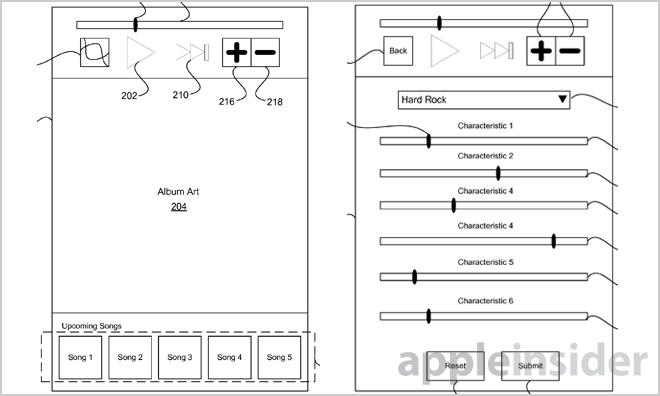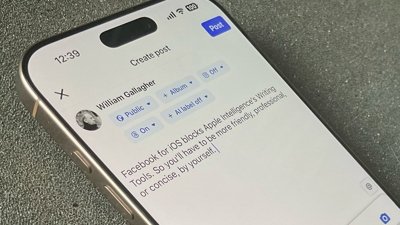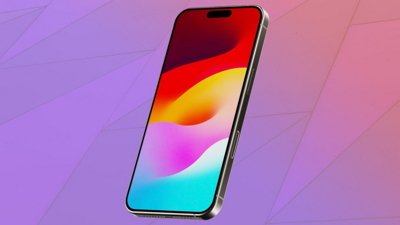The U.S. Patent and Trademark Office on Thursday published an Apple patent application that envisions an ideal Internet radio system, complete with powerful playlist customization and sharing features which may still make it into a future version of iTunes Radio.
When Apple announced iTunes Radio at its Worldwide Developers Conference earlier in June, some pundits compared the service with existing Internet radio options like Pandora, saying both shared a similar feature set. A newly discovered patent filing, however, shows Apple envisioned a somewhat different system with advanced features never before seen in the space.
Reading the abstract of Apple's "Playlist Configuration and Preview" patent application shows little in the way of innovation. With basic "like" and "dislike" user input controlling a dynamically created playlist, the invention appears to parrot already-established systems. In fact, the only hint of inspiration in the introductory paragraph has to do with comparing one user's playlist to others. Hardly a "killer feature."
Digging deeper into the claims and detailed description, however, reveals an Internet radio playlist curation method that, if implemented, would be one of the most customizable and feature rich on the market.
Some of the facets of Apple's filing are already seen in iTunes Radio, such as dynamic playlist generation based on music collections. The proposed system can also generate playlists from a single song based on that track's attributes, a solution other Internet radio services rely on to formulate "stations."
From there, the invention diverges rapidly. Tracks can be removed from the playlist in real time, like existing solutions, but in Apple's version such an action is accomplished automatically based on predefined criteria. The method would allow the next track or tracks to be added to a queue while any given song is playing.
Basic diagram of music service.One of the key differentiators is a customizable upcoming track list. Said list can display the next five songs to be played, for example, with a new song generated after each track finishes. Users are able to manipulate the track list, deleting or reshuffling playback by performing drag-and-drop operations with album cover icons. If a user sees a specific song in the five-track queue, they can move it to the front of the line.
As for playlist customization, the filing points to a more in-depth method than those currently used, and even provided by Apple itself in the unreleased iTunes Radio. This section deals with the "like" and "dislike" buttons normally associated with Internet music streamers. While the patent application includes these elements, as well as their effects on playlist generation, it goes further by offering users a way to offer more input into why a "like" or "dislike" selection was made.
Proposed is an informational area in the GUI that informs a user of how a selection will change their playlist. This area can describe characteristics of a liked or disliked song and can indicate that similar songs are less likely to be played in the future. Importantly, users can indicate why they like or dislike a song by selecting a reason from a pull-down menu or other means of input.
Illustration of granular track controls.For example, a user can select "wrong genre" as to why they don't like a particular track. The corresponding data is sent to the music distribution service, which applies the information to future song choices. Similarly, users can choose to "undo" a like or dislike, as well as manage how often a particular song type gets played.
There is also a means to modify the metadata, or track characteristics, on the user's end for even more granular control of playlist generation. Elements of the song, like genre, tempo and rhythm, among others, can be changed. Other examples include more subjective tags pertaining to how a song makes a user feel. These changes can also be uploaded to the music service for consideration.
Finally, a user can upload their playlist to the music service for comparison with other users' track lists to find and add songs of interest. This type of crowd-sourced music discovery is used in services like Spotify, but Apple's implementation goes a bit deeper. Users can compare not only tracks, but track characteristics to decide whether to add the song to their own playlist.
Illustration of Comparison engine.Many of the methods above are simply impossible to implement as music labels fight to retain control over their content. Like other companies, Apple reportedly struggled to strike deals with major labels in getting iTunes Radio off the ground.
To a large extent, music rights owners dictate what can be played on Internet streaming services and how those services operate. It remains to be seen if Apple can make a change in the sector, but the ideas set forth in Thursday's patent filing illustrates the company's ability to innovate in a fairly established industry.
Apple's playlist configuration patent application was first filed for in December 2011 and credits Sharon E. Friesen, Jorge S. Fino and Jason A. Skinder as its inventors.
 Mikey Campbell
Mikey Campbell

-m.jpg)






 William Gallagher
William Gallagher

 Andrew O'Hara
Andrew O'Hara
 Wesley Hilliard
Wesley Hilliard

 Malcolm Owen
Malcolm Owen
 Marko Zivkovic
Marko Zivkovic





-m.jpg)




15 Comments
Apple enters market, patents trivial things. Prepare for the thermonuclear radio litigation wars against all those companies copying Apples 'reinvention' of radio.
Apple applies for the patent only. The USPO GRANTS that patent or not. Please place the blame where it squarely with rounded-corners belongs!
Can we stop with the "rounded corners" bit already. It's stale.
[quote name="mistergsf" url="/t/158266/apple-patent-filing-hints-at-ideal-iradio-solution-with-playlist-customization-and-comparing#post_2353591"]...stale.[/quote] TROLL! :lol:
Toss back in Lala's following playlists of other users etc and I'm sold I just hope all this data is being used in all systems. These likes and dislikes etc would greatly improve ITunes Genius etc